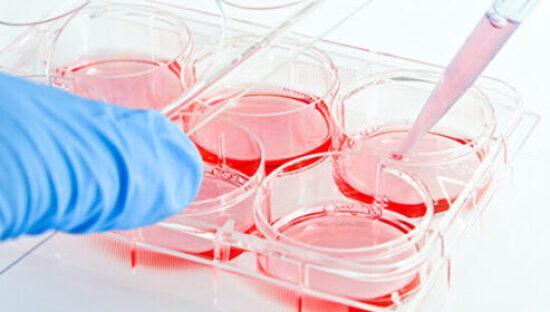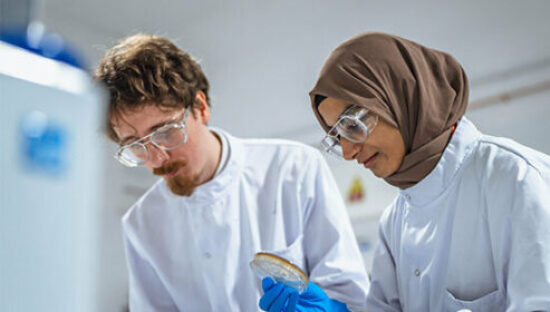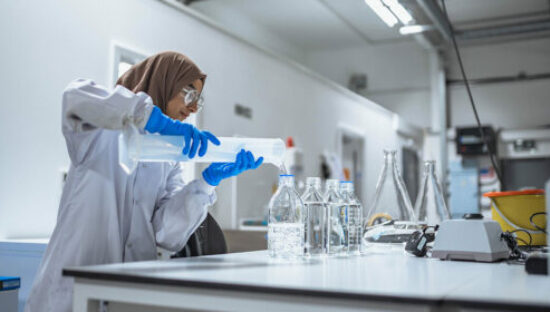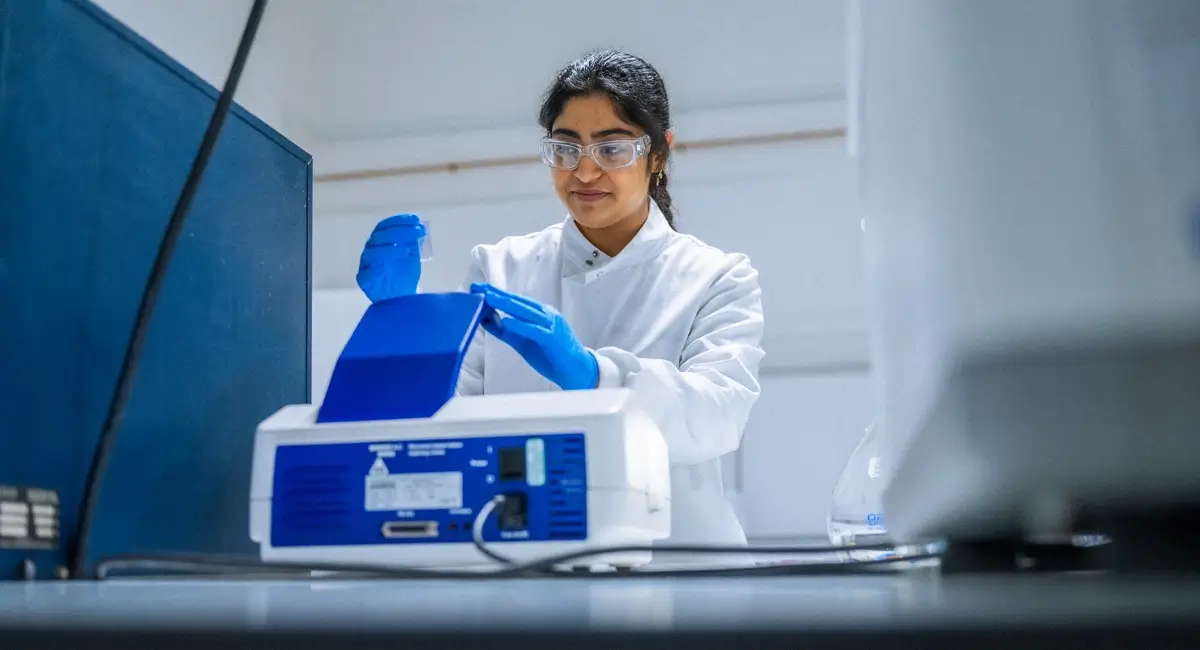
What is Chemical Characterisation?
Chemical characterisation involves analytical techniques that determine the identity and quantity of the chemical components of a material. It is important to know what chemicals are present in a medical device, as well as in the types of materials used, so as to ensure the device is safe for patients, by identifying any chemical interactions and risks that could arise. Chemical characterisation is also important in assessing the biocompatibility of a medical device and identifying the release of any harmful substances during normal use and under simulated conditions. Depending on the type of substances that are being targeted, the analytical technique used will vary. Common methods used for chemical characterisation include:
• Gas Chromatography-Mass Spectrometry (GC-MS): a technique that combines GC, which separates the molecules present in a volatile mixture, and MS, which is then used to identify the molecules based on their mass-to-charge ratios. This technique is recommended for semi-volatile organic substances.
• High Performance-Liquid Chromatography-Mass Spectrometry (HPLC-MS): a technique that combines the powerful separation technique of liquid chromatography with MS. This technique is recommended for non-volatile organic substances.
• Inductively Coupled Plasma- Mass Spectrometry (ICP-MS): this technique is used for measuring the concentration of elements in a sample by atomising the sample which are then detected by the mass spectrometer. It is recommended for the analysis of heavy metals.
The ISO 10993-18 Guidance on Chemical Characterisation
Part of the ISO 10993 series, which addresses the biological evaluation of medical devices, is the chemical analysis of materials used in medical devices as outlined in 10993-18. In this standard, the process of evaluating the potential of a medical device to release chemical substances harmful to end users is outlined; the scope of the evaluation involves:
1. Chemical characterisation, which establishes the biological safety of the medical device through a compositional evaluation. This involves gathering information on device configuration, material composition including additives and coatings, as well as information on the manufacturing processing aids and conditions such as machine oils and sterilisation modes used. Factors that are considered are the clinical application and intended purpose of the device, e.g.
the duration in contact with the patient, and the history of material use. Qualitative and quantitative information can be collected from suppliers, as well as other reliable sources like literature, relevant standards, and any existing data from another medical device whose biological equivalence with the device has been established.
2. Extractables and leachables (E&L) testing, which determine the chemical compounds released from the medical device and whether they are toxic. An extractable is a chemical substance that is released from a medical device or material component of a device when they are extracted using laboratory extraction conditions. A leachable is a chemical substance that is released from a medical device during its clinical use.
3. Analysis of the extract fluid to quantify organic and inorganic elements, using methods such as the chemical characterisation techniques listed above.
4. Toxicological risk assessment based on the chemical characterisation data obtained.
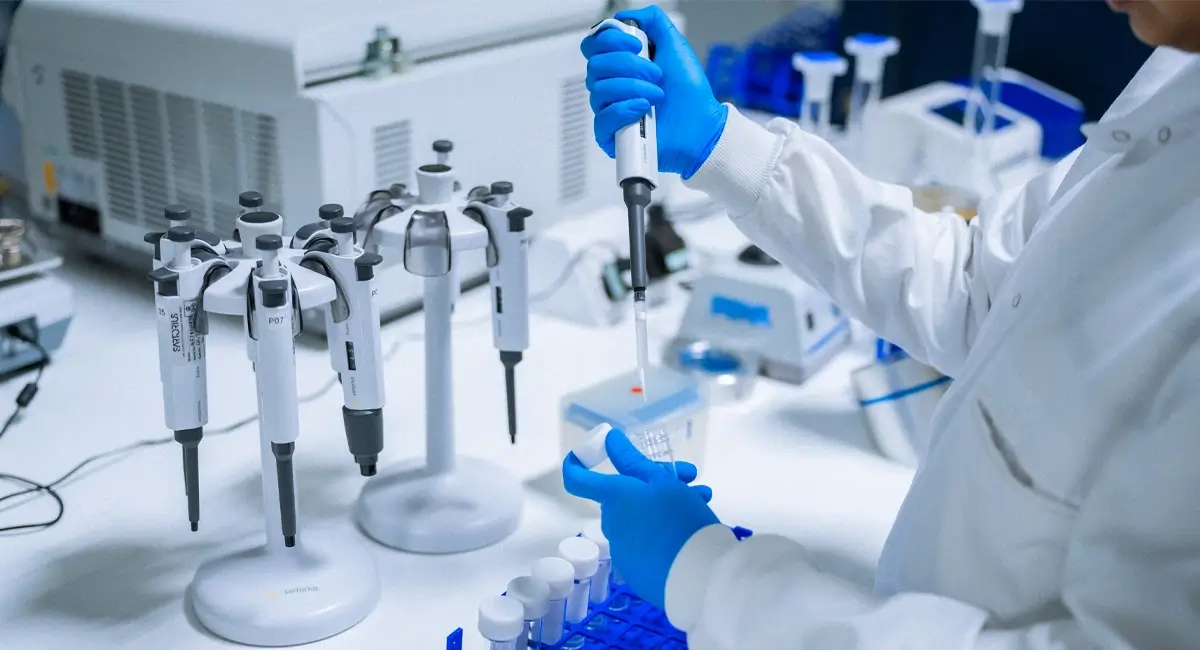
E&L Testing Process and Considerations
The first part of E&L testing is creating the appropriate extraction study for the medical device that is being tested. The extraction conditions, such as temperature, duration, solvent and extraction ratios, need to be appropriate and relevant to the nature and intended use of the device. These conditions are selected with the “contact category” of the device in mind, which are limited contact devices, prolonged contact devices and long-term contact devices.
This threshold is calculated using the formula:
AET = (DBTxA/BC)/UF
where
A: is the number of medical devices that were extracted to generate the extract;
B: is the volume in mL of extract;
C: is the clinical exposure to the medical device (i.e. how many devices a patient/user would be exposed to in clinical practice);
DBT: is the Dose Based Threshold in μg/d (e.g. the threshold of toxicological concern, TTC);
UF: is any uncertainty factor that could be applied based on uncertainty associated with analytical screening methods used to determine concentrations of extractables.
The ISO 10993-18 standard is an essential prerequisite for medical device manufacturers to help them assess the chemical risk associated with their devices. It provides the required data for a device’s biological evaluation (ISO 10993-1) and toxicological risk assessment (ISO 10993-17). Through this medical device manufacturers can ensure the safety of their device when used in the real world and be compliant with the regulations required to get their product to market.


